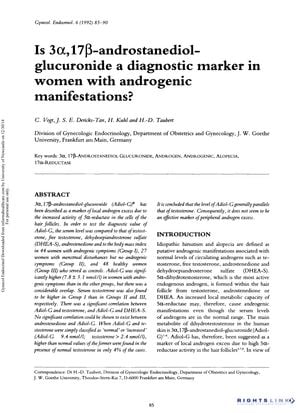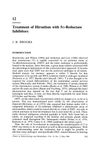Is 3α, 17β-Androstanediol-Glucuronide a Diagnostic Marker in Women with Androgenic Manifestations?
January 1992
in “
Gynecological Endocrinology
”

TLDR 3α, 17β-androstanediol-glucuronide is not a useful marker for androgen excess but may help monitor certain treatments.
In 1992, a study involving 44 women with androgenic symptoms, 27 women with menstrual disturbances, and 48 healthy women investigated the diagnostic value of 3α, 17β-androstanediol-glucuronide (Adiol-G) for conditions like hirsutism, alopecia, and acne. The study found that although Adiol-G levels were significantly higher in women with androgenic symptoms, there was a considerable overlap with other groups, and Adiol-G levels generally paralleled those of testosterone. Adiol-G did not correlate with androstenedione and provided additional diagnostic information beyond testosterone levels in only 4% of cases. The researchers concluded that Adiol-G is not a particularly useful marker for peripheral androgen excess but may be useful in monitoring therapy with 5α-reductase inhibitors.
